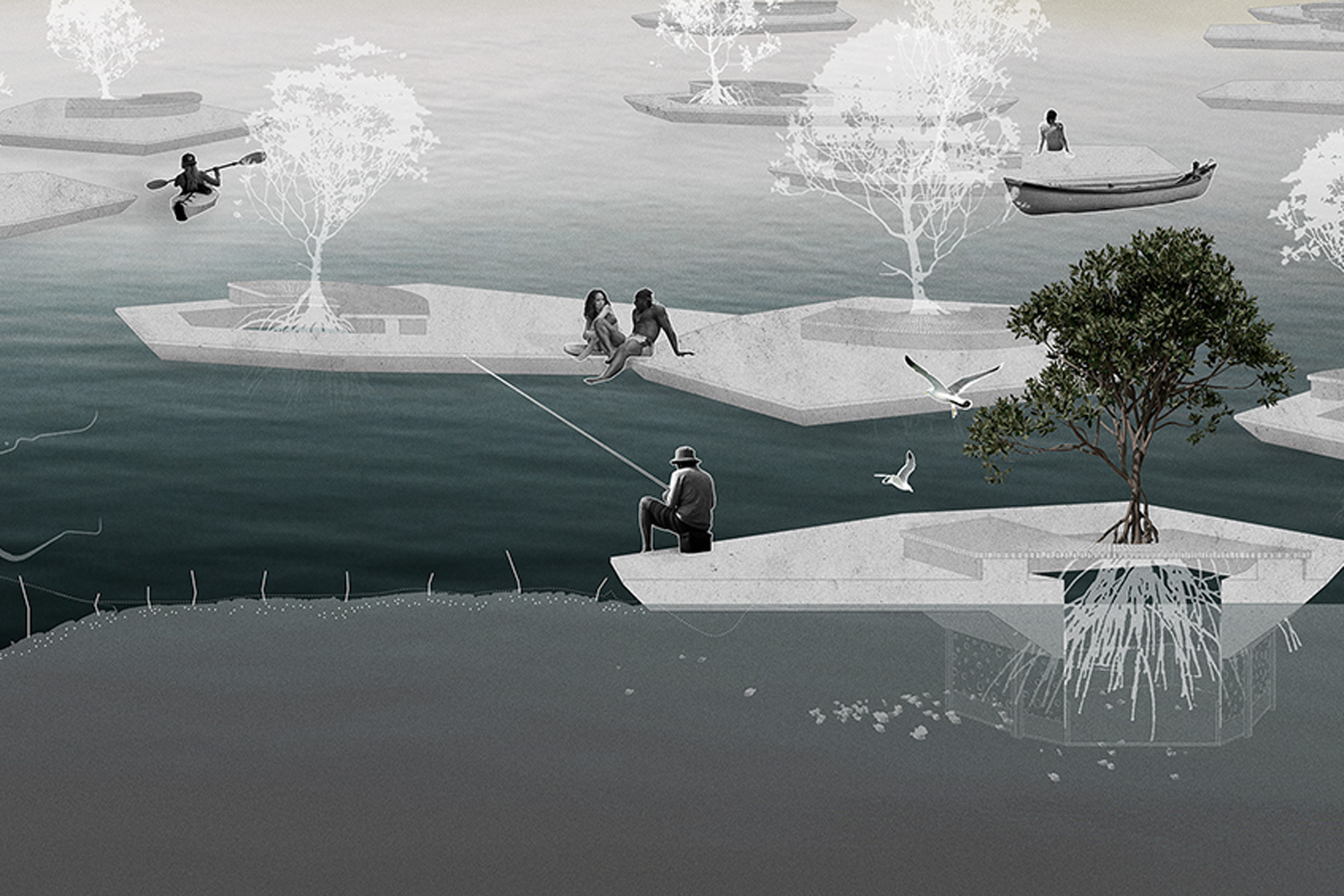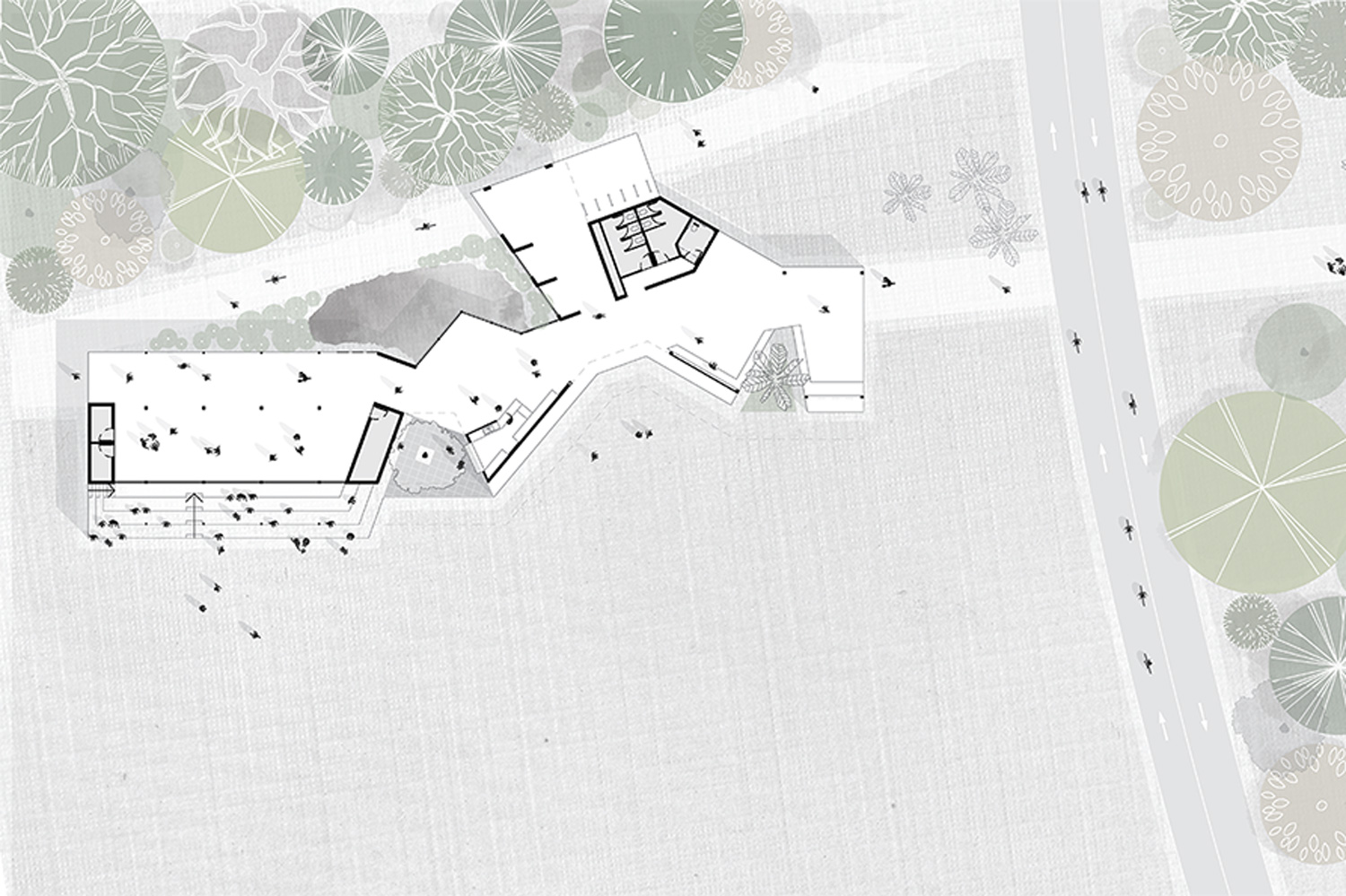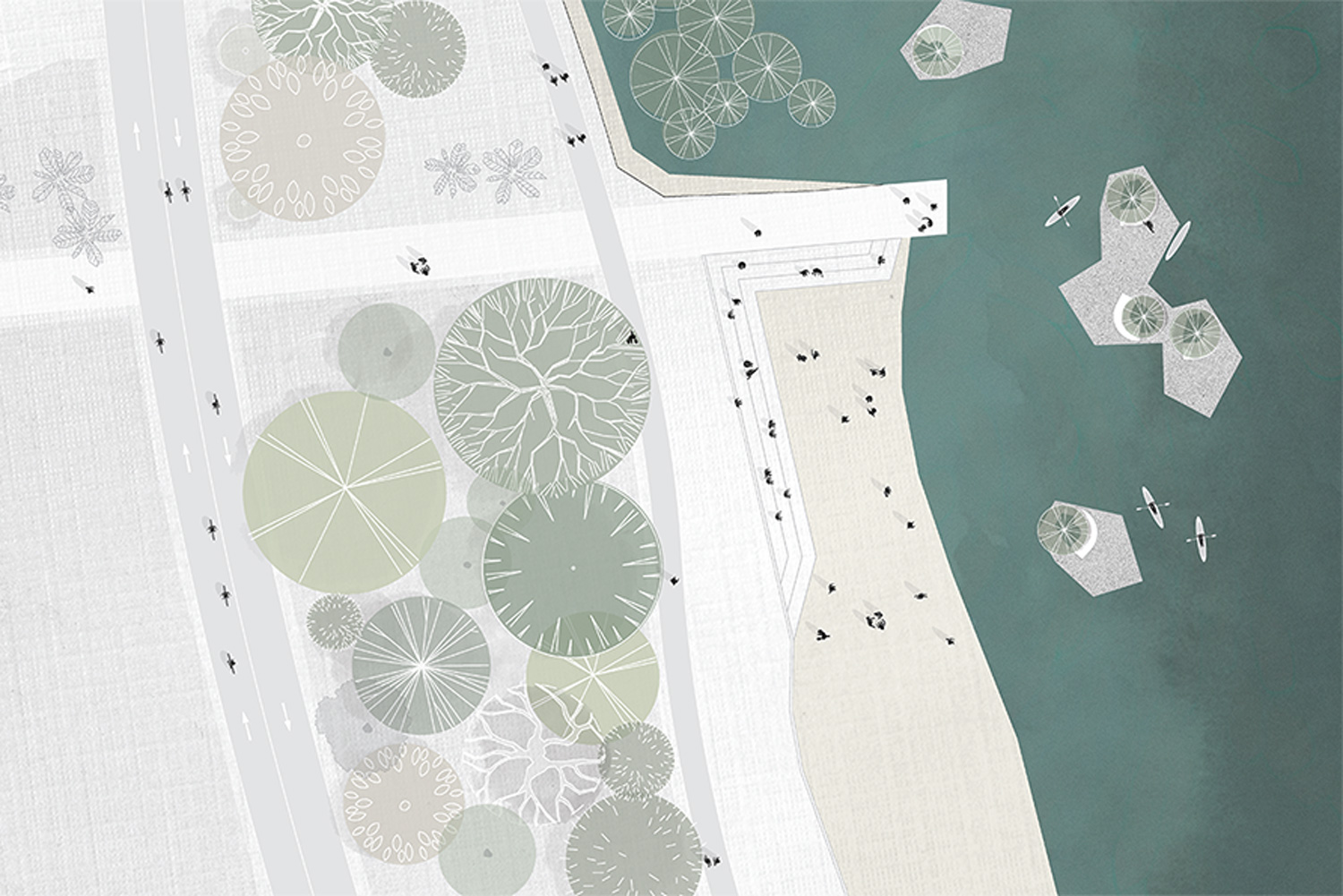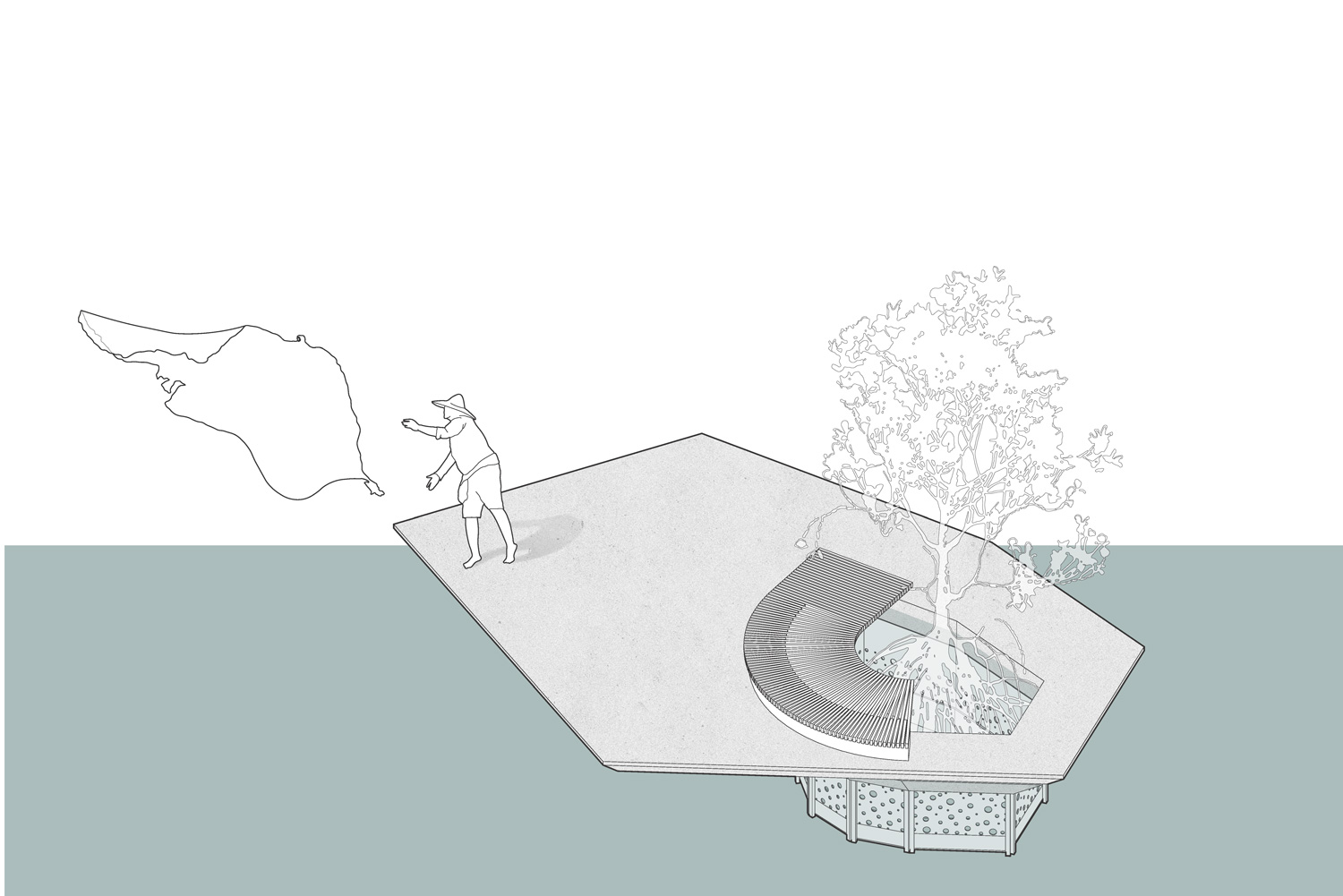Nicola May Myatt
University of Queensland
Australia
From the entrant’s submission:
The Transect Pavilions are ultimately about people, and the ways in which people engage with the built and natural environment. The project is located in Singapore, and was developed as part of an intensive design studio based in Singapore in February 2020. The heart of the scheme is to activate, educate, and revegetate the suburb of Marine Parade by making small urban interventions that provide flexible, adaptable spaces for the local community. The design proposes three pavilion typologies and locations: two pavilions which are embedded in suburban and coastal fabrics, and one water-based typology, housing endangered mangrove species.
The pavilions aim to be the centre of a Venn diagram, the place where ecological consideration and community prioritisation meet. It is estimated that Singapore has increased in land area by 25 per cent due to the rapid reclaiming of land. Land reclamation processes frequently disregard both environmental and urban ramifications, disrupting existing coastal habitats and communities. Two of the pavilions proposed sit on Singapore coast lines: one the current coastline, and one a historic coastline. The water pavilions tease the idea of reclaiming water rather than land. Together, the pavilions relink the historic coast and the current coast through a pedestrian spine.
Through interrogating the use and underuse of local public space, small innovative design interventions can increase the activation of valued community precincts – such as Marine Parade’s East Coast Park. The design proposes tessellating pontoons, housing mangrove trees. This infrastructure reintroduces endangered mangrove species to Singapore’s ever-changing shoreline, while responding to local use of coastal spaces for fishing, kayaking, and swimming.




